Rock gardens are a true marvel in challenging landscapes, and Zone 1 is no exception.
This zone is known for its extreme conditions, but don't let that discourage you. In fact, it presents some incredible opportunities to create beauty and interest using hardy, resilient plants.

Zone 1 encompasses areas with inhospitable conditions like high elevations and a short growing season.
It's quite a challenge. But it can be done if you carefully choose plants that can brave the cold temperatures, limited moisture, and those relentless strong winds.
So, go ahead and curate a combination of perennials, annuals, and shrubs that can thrive in Zone 1.
The result? A flourishing garden that's not only gorgeous but also eco-friendly and sustainable.
Characteristics of Zone 1
Zone 1, also known as the Arctic Zone, is an extreme gardening environment characterized by cold temperatures and short growing seasons.
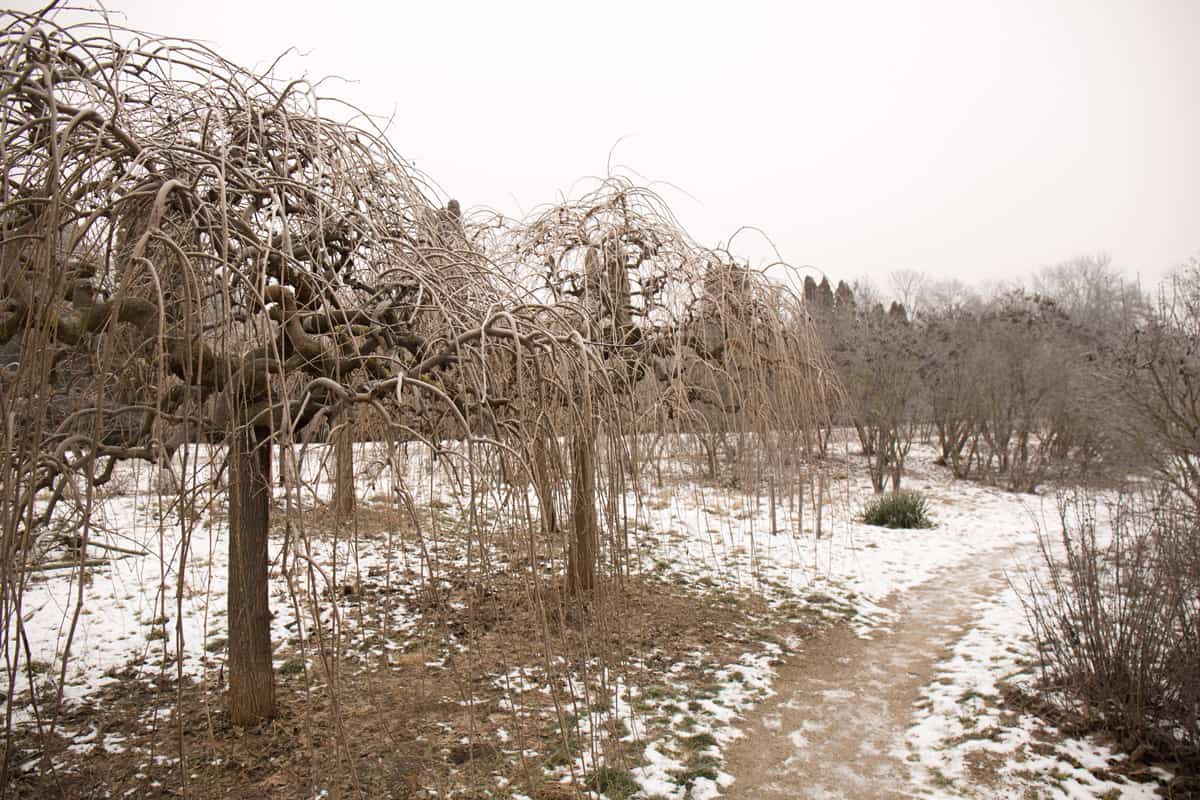
In this zone, you'll encounter challenges such as frost, snow, and ice, making it imperative to select hardy plants that can thrive in these rugged conditions.
Some of the most popular rock garden plants for this zone include sedums, saxifrages, and alpine phlox.
As a gardener in Zone 1, you should also take advantage of microclimates to provide extra protection for your plants, such as shelter from wind and sun exposure.
Benefits of Rock Gardens in Extreme Conditions
Despite the challenging environment, there are several benefits to creating a rock garden in extreme conditions like Zone 1.

Low Maintenance
Rock gardens are known for being low maintenance, as they require less water, fertilization, and maintenance compared to traditional gardens.
This is especially useful in extreme conditions where the growing season is short and caring for delicate plants can be more difficult.
Increased Biodiversity
Designing a rock garden in Zone 1 allows you to introduce hardy, native plants to your landscape, promoting greater biodiversity and supporting the local ecosystem.
Erosion Control
The use of rocks and other hardscaping materials in a rock garden helps prevent soil erosion, a common issue in extreme environments where heavy snow and ice can cause the ground to become unstable.
Visual Interest
Rock gardens offer unique design possibilities in any environment, but they are particularly well-suited for Zone 1 where traditional gardens may struggle.
By incorporating various rocks, boulders, and hardy plants, you'll create an eye-catching, resilient landscape.
By understanding the characteristics and benefits of rock gardens in extreme conditions like Zone 1, you'll be better equipped to successfully create a beautiful and low-maintenance garden that can thrive even in the harshest environments.
Selecting the Right Rocks and Stones
When designing your rock garden in Zone 1, it's important to select the appropriate rocks and stones to withstand the extreme conditions.
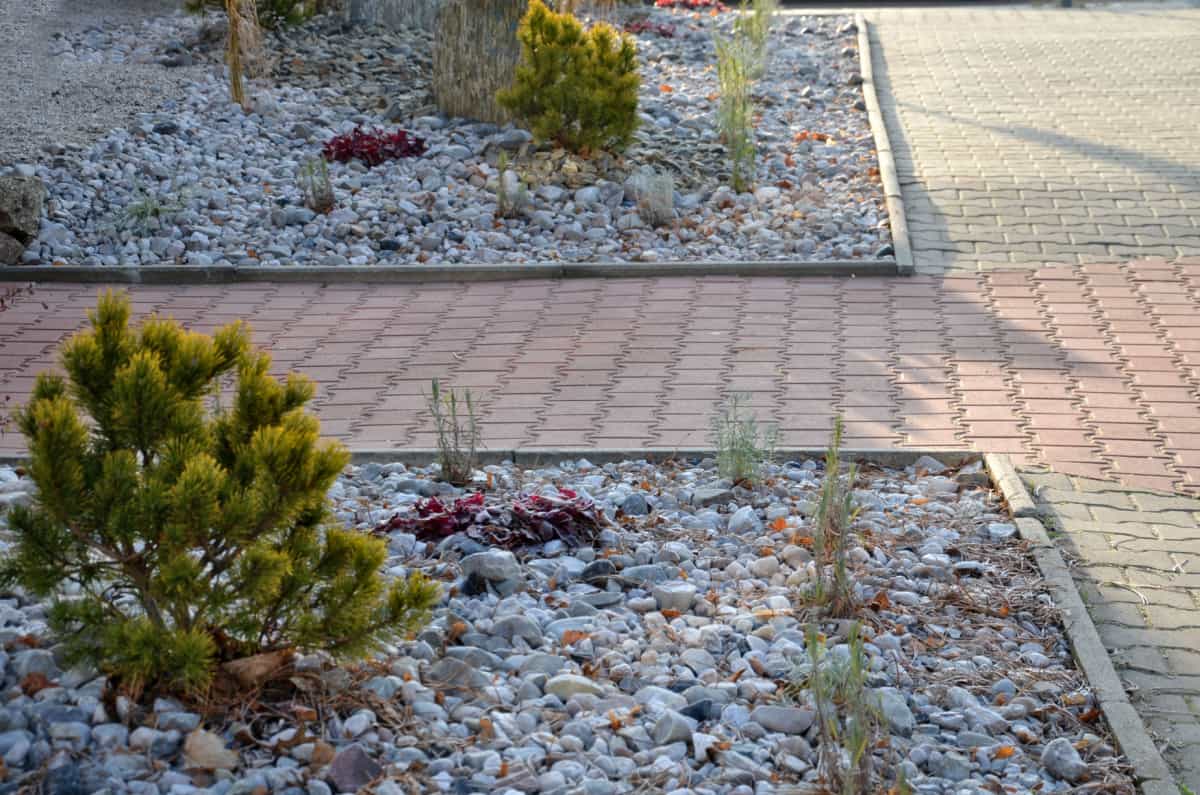
Consider incorporating a mix of igneous, sedimentary, and metamorphic rocks. These are all strong materials that can endure the harsh environment and temperatures.
- Igneous rocks such as granite or basalt are durable and resistant to weathering.
- Sedimentary rocks like limestone or sandstone can add texture and character to your garden but may be more susceptible to erosion and weathering.
- Metamorphic rocks like marble or slate are sturdy and visually appealing.
Size and Shape Considerations
The size and shape of the rocks you choose for your rock garden in Zone 1 will greatly impact the overall aesthetic.
You should aim for a balance between small and large rocks, as well as a mix of rounded, irregular, and angular shapes.
Be mindful of how your rock choices can create contrast and interest in your garden:
- Small rocks can be used to fill gaps, edge beds, or create walkways.
- Medium-sized rocks can act as focal points or groupings to enhance the design.
- Large rocks can serve as natural-looking barriers or centerpieces to anchor the garden design.
Remember, variety is key in creating visual interest and harmony in your rock garden.
Creating Visual Interest
With the right mix of rock types, sizes, and shapes, you can make your rock garden as visually interesting as possible.
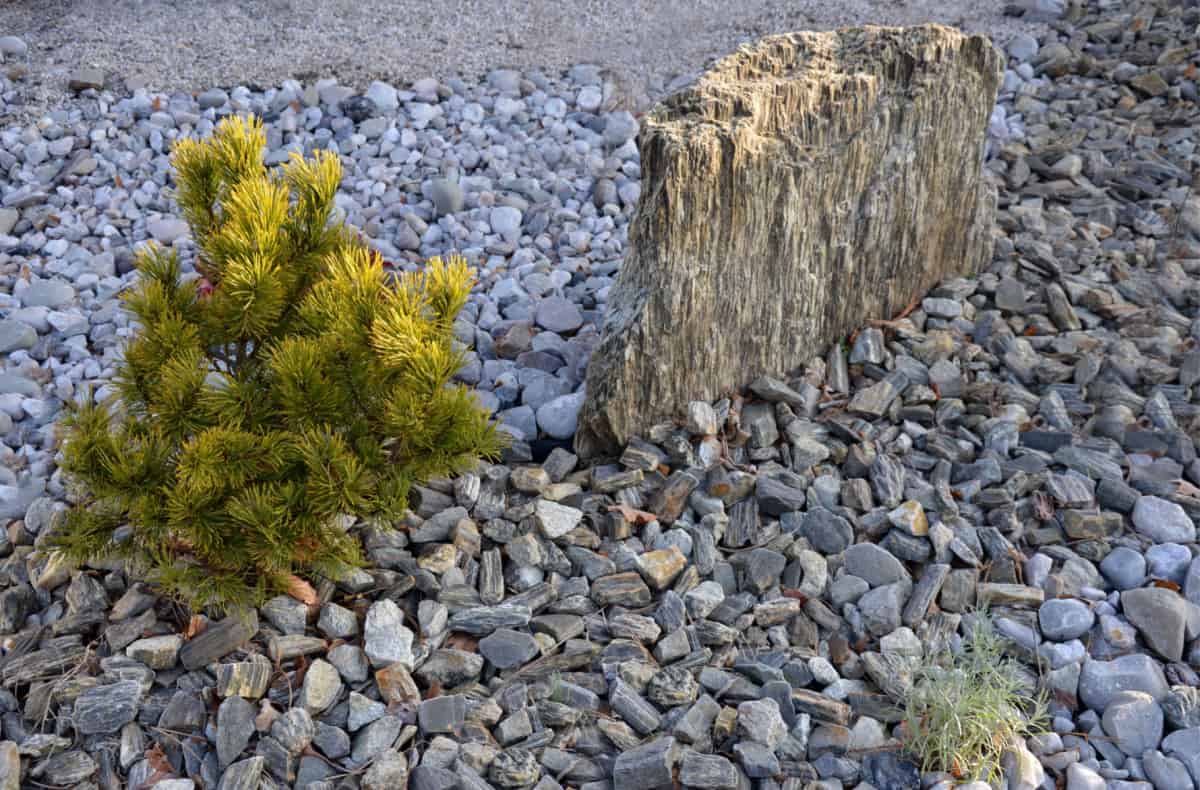
Here are a few tips:
- Arrange rocks in groups, taking into account their size, shape, and color. Create clusters that blend well together and add visual consistency.
- Use color to add depth and interest. Darker rocks can make the area look more expansive, while lighter rocks can give it a brighter, more open feel.
- Experiment with textures. Mixing different kinds of rocks such as rough, smooth, or shiny can create a dynamic and captivating rock garden.
By keeping these factors in mind, you can create a stunning and resilient rock garden in Zone 1 that will thrive even in the most extreme conditions.
Choosing Appropriate Plants
When creating a rock garden in Zone 1, it's essential to choose plants that can withstand extreme conditions.
In this section, we'll explore some options for drought-tolerant, cold-hardy, and low-maintenance plants suitable for your rock garden.
Drought-Tolerant Plants
Selecting plants that can tolerate dry conditions is crucial for a successful rock garden in Zone 1. Some drought-tolerant options to consider include:
- Sedum: These succulents come in various colors and shapes and can handle dry conditions very well.
- Lavender: Fragrant and visually appealing, lavender is an excellent choice for your rock garden.
- Thyme: This low-growing, creeping herb thrives in dry, rocky areas.
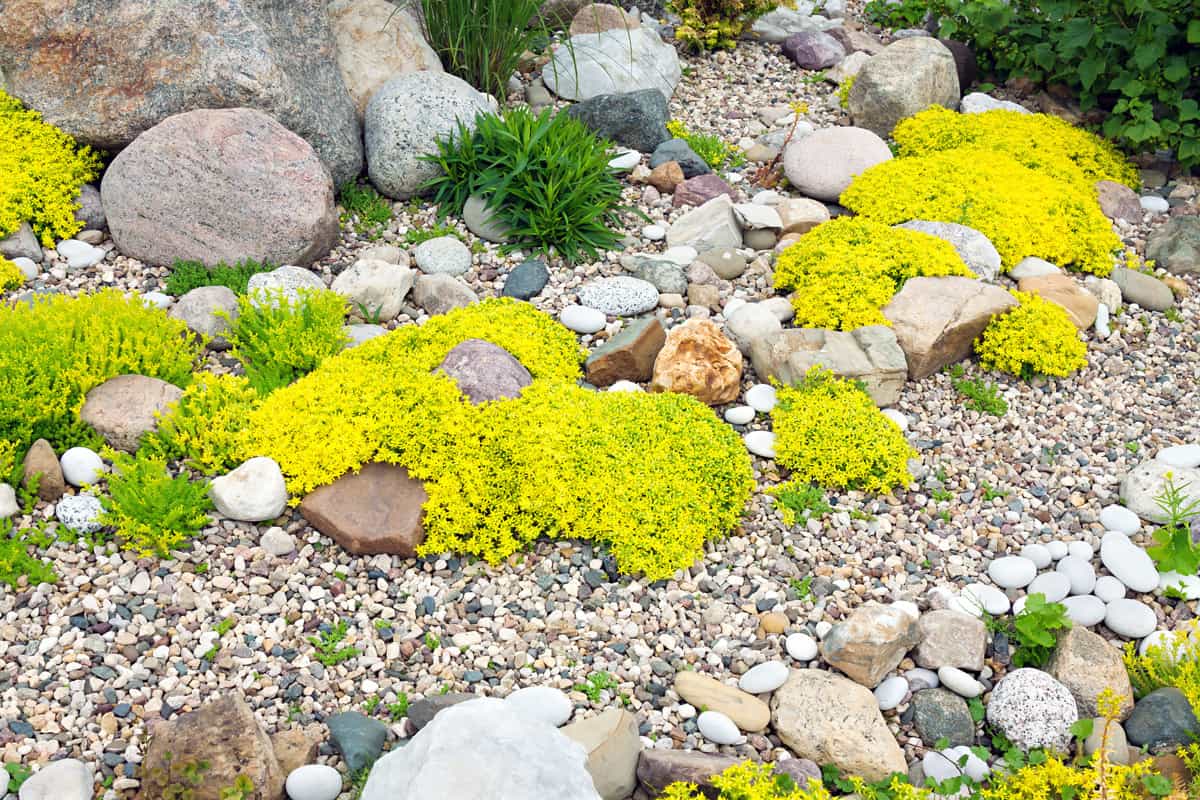
These plants will save you from frequently watering your rock garden while maintaining its beauty.
Cold-Hardy Plants
Since Zone 1 experiences extremely low temperatures, choosing cold-hardy plants is essential. Some options that can withstand the cold include:
- Pasqueflower: This early blooming perennial can handle cold temperatures and features unique, feathery foliage.
- Creeping phlox: With its vibrant spring flowers, creeping phlox is a cold-hardy ground cover option.
- Juniper: This evergreen shrub is available in various sizes and can handle both cold and drought conditions.
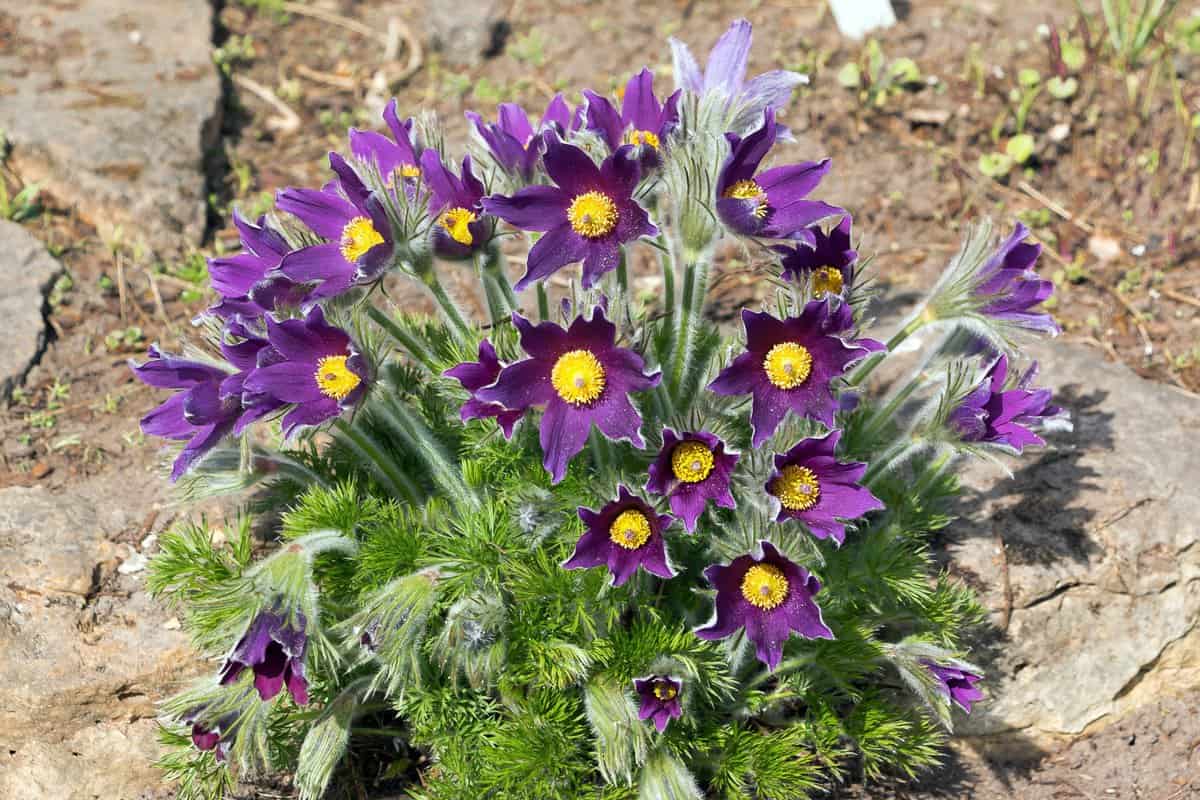
Incorporating cold-hardy plants will ensure your rock garden remains beautiful even in harsh winters.
Low-Maintenance Options
To make garden care easier, consider including low-maintenance plants that require minimal upkeep. Some great low-maintenance options for your rock garden are:
- Hen and chicks (Sempervivum): These perennial succulents require very little care and come in various colors and shapes.
- Yucca: This striking plant can tolerate drought and cold, making it a low-maintenance option.
- Blue fescue: This ornamental grass is known for its stunning blue color and can thrive in dry conditions.
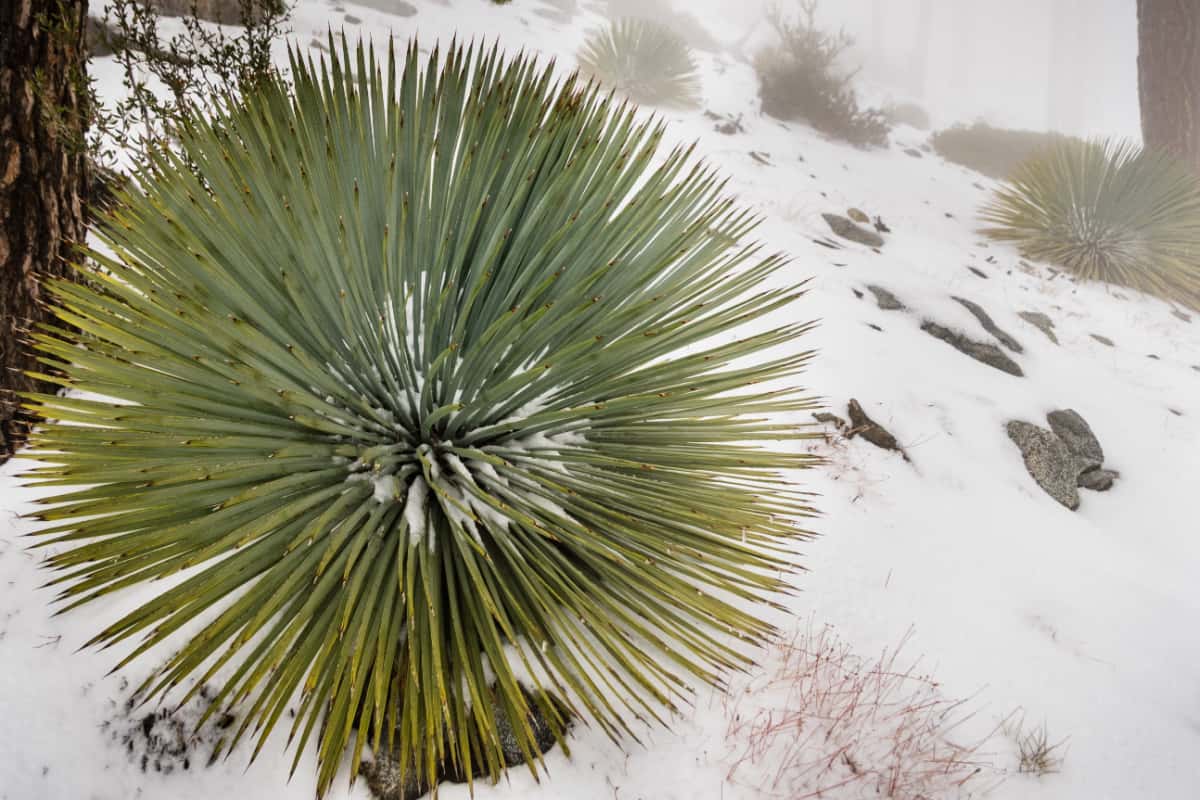
By choosing low-maintenance plants, you can enjoy your rock garden's beauty without spending excessive time on upkeep.
Designing Your Rock Garden
When designing your rock garden, it's essential to consider drainage and soil requirements. Choosing the ideal location for your rock garden is also crucial. Here are some tips.
Drainage and Soil Requirements
Since plants in Zone 1 face extreme conditions, they need well-draining soil to prevent root rot.
You can achieve this by incorporating gravel into the soil and creating a slope for proper drainage.
Moreover, opt for sandy or rocky soil with low fertility, replicating the conditions in which many rock garden plants naturally thrive.
Placement and Spacing
To ensure your plants receive enough sunlight, select a south-facing slope or area.
Even in the harsh conditions of Zone 1, plants need plenty of sun to grow and flourish.
When setting up your rock garden, space the plants appropriately, giving them enough room to breathe and spread their roots.
This will not only improve their appearance but also promote healthier growth.
Integrating with Natural Landscape
To create a seamless and visually appealing rock garden, integrate it with the natural landscape.
Utilize native rock materials and arrange them in a way that complements the surrounding environment.
Select plants native to the area, as they will be best suited to local soil and climate conditions while also providing habitat and sustenance for local wildlife.
Incorporate different textures, colors, and shapes in your garden design, celebrating the unique beauty of Zone 1's extreme conditions.
Remember, a well-designed rock garden not only enhances the aesthetic appeal of your space but also contributes to the biodiversity and resilience of the environment.
Maintenance and Care
Things may seem dormant but even winter plants need some level of care and maintenance to help them thrive.
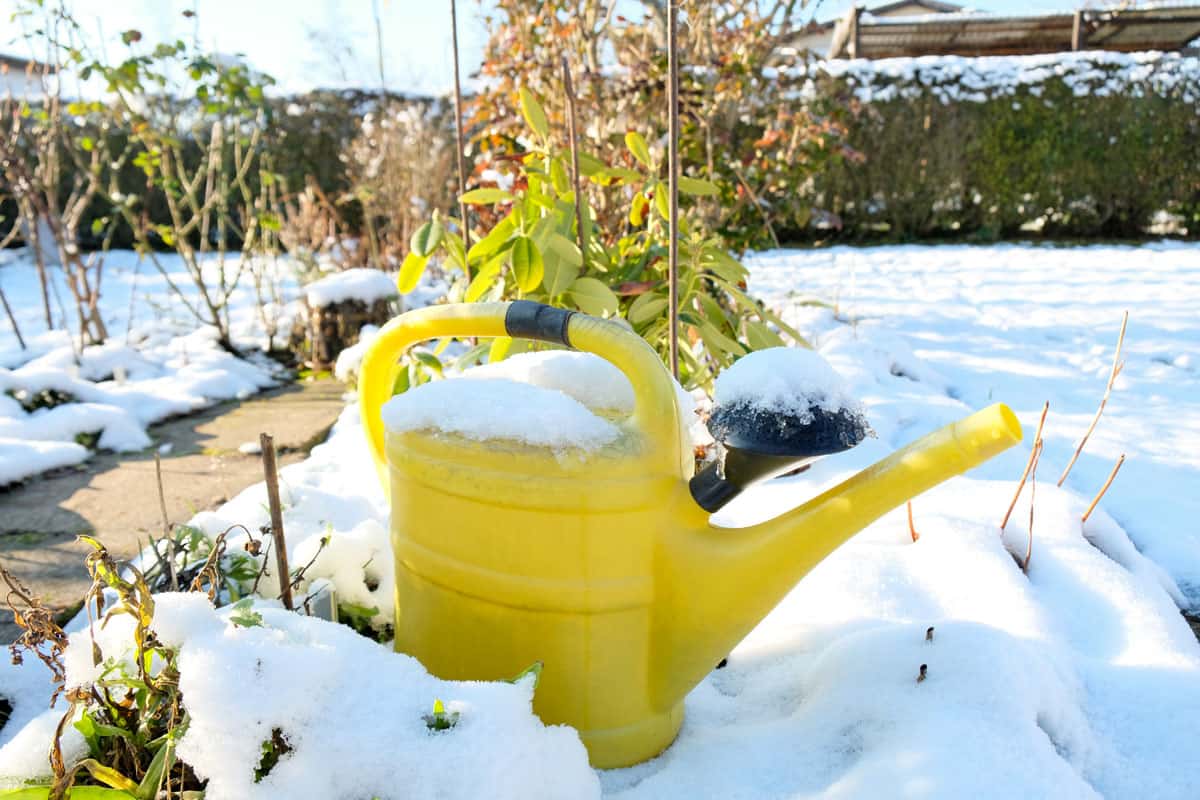
Watering Techniques
When tending to your rock garden in Zone 1, it's essential to water your plants properly.
Most rock garden plants are drought-tolerant, but they still need some watering, especially during dry periods.
To conserve moisture and prevent water evaporation, water your plants early in the morning or later in the day.
Make sure to water at the base of the plants, avoiding wetting the foliage, which can lead to diseases and pests.
Pest and Disease Management
Your rock garden is not immune to pests and diseases, but by following some simple practices, you can minimize potential problems.
Early detection and treatment are key to managing pests and diseases:
- Monitor your plants regularly for any signs of pests or diseases.
- Remove unhealthy-looking leaves or branches, as they could harbor pests or diseases.
- Encourage beneficial insects like ladybugs and lacewings, which prey on common garden pests.
- Use organic or chemical pesticides and fungicides if necessary, but always follow the product label instructions.
Annual Pruning and Maintenance
To keep your rock garden looking its best, it's important to give it some attention regularly:
- Deadheading: Remove spent flowers from your rock garden plants to encourage further blooming and prevent the plants from self-seeding.
- Pruning: Cut back any excessively long branches to maintain the plant's shape and prevent overcrowding in the garden.
- Dividing and transplanting: Some rock garden plants can become overcrowded over time. To maintain their health and appearance, divide and transplant them to other areas of your garden.
- Weeding: Regularly remove any weeds from your rock garden to prevent them from competing with your plants for water and nutrients.
- Mulching: Apply a layer of organic mulch around your rock garden plants to retain moisture, suppress weeds, and insulate roots during winter months.
Key to Building Your Resilient Garden in Zone 1
Remember that patience is key to enjoying the process of designing your rock garden.
It may take time for your plants to establish themselves and for the overall look of your garden to come together, but the end result will be a unique and stunning display that showcases the resilience and beauty of plants adapted to extreme conditions.
Best of luck embarking on your Zone 1 rock garden journey, and may your garden become an inspiring testament to the wonders of nature's adaptability and determination.
For more winter gardening tips, check out these other helpful articles:
